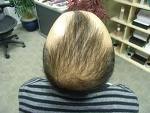Update on Hair Loss Treatment for Men
02 Feb 2011, by in MALE HAIR LOSSHair loss affects two-thirds of all men, and for many it starts by age 30. Medical advances have made a variety of hair loss treatments available to stop balding or replace lost hair.
By Dennis Thompson Jr.
Medically reviewed by Niya Jones, MD, MPH Print
If you’re experiencing hair loss, you’re not alone. About a quarter of all men begin to go bald by the time they’re 30, and about two-thirds are either bald or have thinning hair by age 60.
While in years past, men were forced to cover bald spots with toupees or comb-overs, medical science now serves up a number of options that can reverse or counter hair loss. There are drugs that promote hair growth and transplant technologies that enable doctors to recreate a full head of hair.
Hair Loss Treatment: Medications
There currently are two drugs on the market that have been approved to treat hair loss in men. The drugs are Rogaine (minoxidil) and Propecia (finasteride).
Rogaine has been available since 1988 for the treatment of hair loss and is available over the counter. It’s a liquid solution that is applied directly to the balding areas of the scalp twice daily. Rogaine slows hair loss for many men, and prompts new hair growth in some. Exceeding the recommended dosage doesn’t produce faster hair growth and can cause side effects. On the flip side, hair loss will recur at its earlier pace if you decrease the dosage or halt application altogether. You have to use Rogaine for 4 to 12 months before you’ll see any effect.
Rogaine may cause scalp itching, dryness, scaling, flaking, irritation, or burning. If those symptoms are severe or don’t go away over time, call your doctor. Also contact your doctor if you experience weight gain, swelling, difficulty breathing, rapid heart beat, chest pain, or lightheadedness.
Propecia has been available since 1997 for treating male pattern baldness, and is the first drug available in pill form. It has proven to be much more effective than Rogaine. Propecia works by blocking an enzyme responsible for the formation of dihydrotestosterone (DHT) in men. DHT, a byproduct of the male hormone testosterone, is believed to cause hair follicles to shrink and ultimately cease growing. Like Rogaine, Propecia controls hair loss, but does not cure it. It can take up to three months before you see any benefit, and if you stop taking the drug you will likely lose the hair you’ve regrown.
There are some potentially serious side effects, however. Propecia can cause impotence, decreased sexual desire, and pain in the testicles. Contact your doctor if these side effects don’t go away, or if you develop a rash, itching, hives, or swelling in your lips or face.
Do you have Hair Loss Problems, read our Hair Loss Help







Sorry, the comment form is closed at this time.